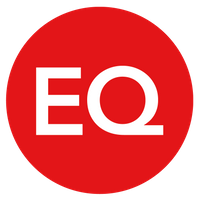Reward Director Masterclass: how to use data to create a personalised benefits strategy

Why is this important? Because pay isn’t the big pull these days. For a start, companies simply cannot afford to compete for the best talent on the basis of pay anymore. They’re all trying to do more with less. Second, people are looking for authenticity in all aspects of their lives, and their employer is no exception. They want to know that the company they work for stands for something more than profits and offers a sound work/life balance. It’s not unknown for individuals to take a pay cut to achieve this heightened sense of being.
Communicating this to current and future employees has to come from all aspects of a business these days and be reinforced on an ongoing basis, from hire to retire.
Think of your employees as customers
From your perspective, as a reward professional, it’s about communicating Total Reward in a way that resonates with all your employees: whatever their age, gender, location or interests. Not only making them aware of the reward and benefits package but making sure they understand how to take full advantage of it.
Success relies on sending the right message to the right people at the right time. For this you need to mix marketing and brand basics – along with a splash of internal communications expertise – into your reward recipe.
This is no mean feat and not something that you’re going to single-handedly come up with overnight.
Start by talking with colleagues in marketing and brand to gain an understanding of how they attract and hope to retain customers. There are strong parallels with the in-house experience for employees.
Just like customer loyalty, employee loyalty relies on relationship building and trust. This can only be achieved by really getting to know your employees’ needs.
This seems logical so far. But considering everyone’s different, how on earth can you hope to: a) get to know individual wants and needs; and b) come up with the ways and means to target benefit communications accordingly.
Welcome to geodemographics
Thankfully, there are whizzy platforms – otherwise known as geodemographic tools – out there that can do all of this for you.
Here’s how it works. The more detailed the geodemographic tool the better. This technology is traditionally used in a marketing environment to break down consumer data into segments based on millions of consumer data points over hundreds of demographics, behaviour, lifestyle and geographical dimensions. This information is collected from third party survey data, open data and using consumer marketing databases.
For example, if you’re in segment C07 (using information taken from EQ Amplify), you’re likely to be from a white collar, middle-income family, living with children in your own, often semi-detached, home. Your bills are likely to be high so you display switching behaviour. You’re more digitally savvy etc.
From this information, marketeers derive important insights to help deliver more meaningful messages.
Such tools also allow for profiling of discrete populations and here’s where the employee aspect fits in. You can upload a sample of your employee database for the purposes of analysis. It will then map your employees, according to the segments, to help you understand your people more holistically.
All of this can be incorporated into a Total Reward platform that uses triggers and multi-channel communications to automatically target different cohorts in line with life stages, allowing you to influence individuals more positively.
Using geodemographics for reward purposes
Here’s an example of how reward could use geodemographics: let’s say that your goal is to encourage your employees to take advantage of the benefits and services available to them to help save for retirement. Your initial and broad message to all could be simply ‘save for retirement’, but that will probably fall largely on deaf ears.
Next, communicate to relevant segments the value of financial advice, or simply budgeting tools, to help with day-to-day finances. Then focus on wealth management for certain people of a certain age to help encourage the build-up of a pot of savings. Additionally, target messages about buying a house and having children: everything on the route to retirement that could have an impact upon savings.
In this way, you can ensure that messages are personalised: they’re relevant to individuals and therefore much more likely to be taken on board.
Obviously, measuring impact at each step of the way is key and that’s why such communication tools must also include engagement measures as standard.
In short, expectations of reward may have changed, but the support available has changed too. Maybe it’s time to take a look.
The author is Andrew Woolnough, director of HR solutions at Equiniti.
This article was provided by Equiniti.
Supplied by REBA Associate Member, Equiniti
Hi we are EQ; some may know us as Equiniti! We provide specialist reward, benefits and payroll solutions.







